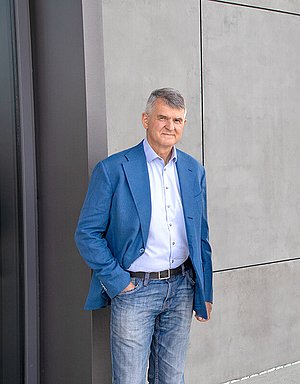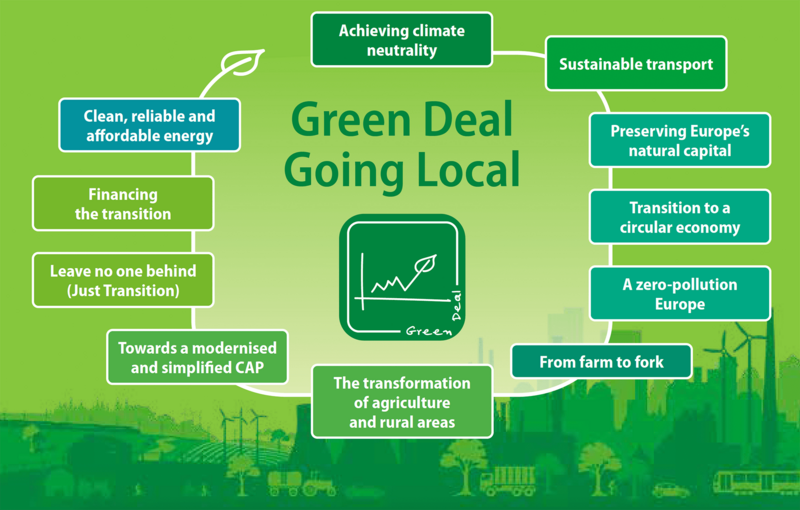Thinking ahead
Michael Horsch
Michael Horsch talked to terraHORSCH about hybrid farming with regard to the Green Deal announced by the EU and about how many possibilities really still are in the topic CO2 storage in humus.

Already today and surely also in the future farmers all over the world have to deal with numerous topics. Some have rather regional consequences, some are of global importance. Let’s start with regenerative farming. With regard to this topic some things have to be clarified and explained. We started to talk intensely about this topic, and we got a lot of feedback. Among others, questions like: “What’s that supposed to mean? Did we do something wrong?“ Or: ”Do we have to repair something?“ For the term “regenerative” implies that something has been wrong. I would like to make one thing very clear: We do not at all want to create this impression. And we do not think that this is the case. The best term would be the one HORSCH already coined some years ago and that in the meantime found its way into our sector. It is even used in press releases of agricultural ministries all over the world because it makes sense. It is the term hybrid farming. We do not step backwards, we move on. And when we talk about hybrid farming, we also talk about measures that are used in regenerative farming. Moreover, we are curious how hybrid farming will develop in the future. Findings from the organic sector and the tried-and-true from conventional farming come together and in combination with modern biotechnology perhaps a completely new form of food production can develop. In the long run hybrid farming will be another alternative to eco-farming respective conventional farming and for example in the plant protection sector, too, it will use the best methods from mechanical and chemical plant protection.
Green Deal
Another important topic we will have to deal with is the Green Deal Brussels has just passed. By the way, it does not only concern the EU, but indirectly via future imports and exports also the international markets. Now there are discussions how we shall handle it. In total, over all industries and measures the CO2 emission in the EU has to be reduced by at least 55 % compared to 1990 until 2030. The EU parliament would even prefer a reduction by 60 %. Moreover, the objective for 2050 is to make Europe the first climate-neutral planet, whatever that means. But until 2030 we want to have achieved 55 % of the objectives – in ten years. The Green Deal includes a large number of different sectors and measures, like for example a recycling economy where we no longer produce plastic waste but only paper waste. By the way, recycling economy also deals with: How can a car a be recycled if is it broken after an average of 200,000 kilometres. What can be reused? What has to be thrown away? There are numerous sub-categories.
Another important and large sector of this Green Deal is Farm to Fork that consists of four parts. The first one: reduction of plant protection agents by 50 %. The question that is now discussed intensely: Based on what? The next point is a fertiliser reduction by 20 %. The third point: the use of antibiotics in animal production has to be reduced by 50 %. This will, of course, affect the manufacturers from the chemical and fertiliser sector considerably. The turnover in this sector will probably decrease by up to 50 %. And the fourth point: Until 2050, 25 % of farming in Europe has to be ecological. This is a rough outline of the framework.

Source: https://cor.europa.eu/de/engage/Pages/green-deal.aspx
Courtesy of “EU – European Committee of the Regions – Media Centre“
It is quite interesting that we have already been dealing with these topics for quite some time, long before these stipulations now were issued officially. We and a lot of our customers, too, who we are in close contact with all over the world for a long time have been well aware of the fact that we have to work on the topics reduction of plant protection measures or residue-free production of staple foods. So what does hybrid farming mean in this context? The ultimate objective “yield maximisation is the only kind of profit maximisation“ worked perfectly in the past 60, 70 years. But we will only be able to advance if we abandon this way of thinking. The details, of course, have to be discussed. This actually is the core approach of hybrid farming. Hybrid farming will only work if we do not put the ultimate maximum yield first. This does not mean that we cannot achieve it.
Reduced meat consumption?
Another central question in this context is: What will we eat in the future? This topic gains enormous momentum among people in Europa, USA/Canada, but also for example in Brazil or Russia. Meat consumption is reduced a little bit and people eat more vegetable products. By the way, in the US, this topic might get rather exciting after the election victory of Joe Biden and Kamala Harris. For in their election program they, especially Vice President Harris, take a firm stand that meat consumption is to be reduced – mainly in the fast and junk food sector. I do not want to judge whether this is right or wrong. It would also happen if the outcome of the election had been different. Flexitarism, i.e. less meat consumption, is a trend in a lot of countries all over the world – even if these countries, of course, only cover part of the whole world population. But people change their diet for health and/or for climate reasons. The same is true for meat substitutes. We will no longer need the current quantity of maize and soya for animal feed. More land will be available for vegetable food.
I also observe that often people do no longer discuss why and when exactly we have to implement the new processes. Many people already discuss what is the best way to do it. And when I talk about my thoughts with regard to hybrid farming, they often say: “Yes, we have to deal with this to manage our farms sustainably and profitably.” Perhaps in some countries we can even earn money with regard to the topic of residues in food. For the consumers want food without residues. And this is something you can control exactly. Even if only Europe wants it, it will affect the whole world. And if maize from the Ukraine or soya from Brazil arrives and residues are found, the train full of wheat or the ship full of soya has to go back home. This, too, are topics in the EU’s Green Deal. Of course, there are countries that for example for wheat might consider this as a competitive advantage. Let’s take the Ukraine as an example. Their wheat would go to Egypt or China. But if Europe drops out as an import market for maize or soya, this will have massive consequences on resource flows and also on the price. For when the soya and maize producers start looking for new markets, all the other producers will do that, too.
Humus formation
With regard to the topic of humus formation it becomes more and more clear what is possible and what is not. It is a fact: in my opinion, especially the Germans, among others, rank first when it comes to intensive and modern farming. But most of them have not yet achieved the maximum organic carbon (C-org) in our fields. The average humus content of our arable land in Germany is just below 2 %, for grassland it is 5 %. How can it happen that the C-org content of cultivated grassland is twice and a half as high as the content in arable land? This is closely related to the fact that photosynthesis is carried out the whole year round. As soon as it is sunny and wet, sugar is produced. And part of this sugar, between 10 and 30 % depending on the plant species, is emitted as liquid carbon into the rhizosphere and the soil organisms. They increase considerably. The spreading of soil organisms, however, is limited by the salt concentration (fertiliser) in the soil. Little research has been done on this topic so far, but it is clear that with a wider rotation, a high share of catch crops and an adapted, non-turning cultivation you will get closer to the C-org rate of a cultivated permanent grassland. Thus, it should be possible to build up to 0.1 % of humus per year. But the humus that is built up in this case normally is nutritive humus and not permanent humus which mainly appeals to the clay content in the soil. At the moment, you can see this in Kazakhstan. During the past 60 years, they loosened the complete fallow at a depth of 10 cm – the nutritive humus is almost used up. Now they started to cultivate with the Tiger at a depth of 30 cm. This is how they want to reach the deeper layers of permanent humus. A lot of nutrients plants can benefit from when growing are still mineralised in the soil.